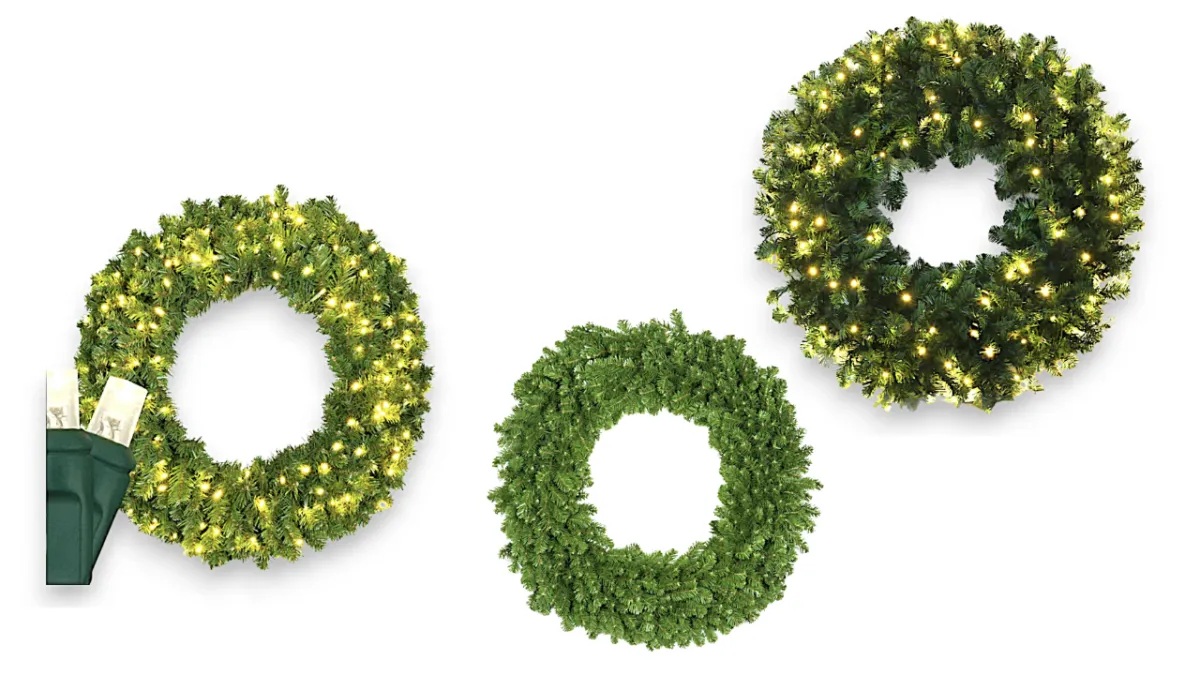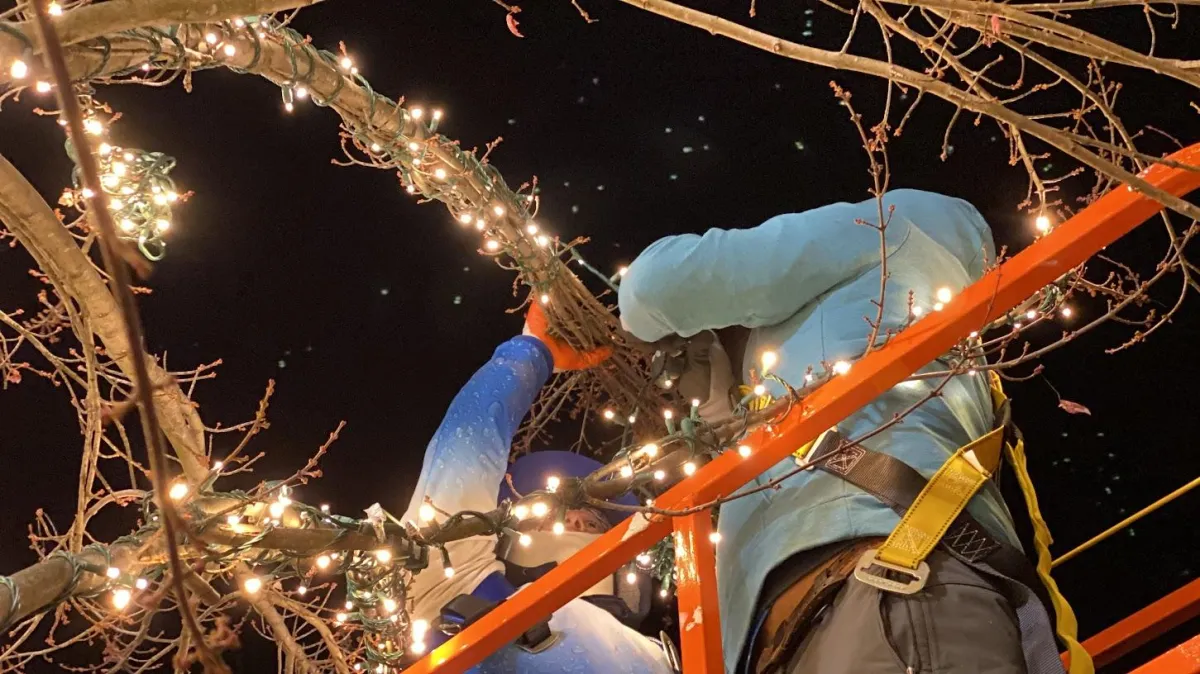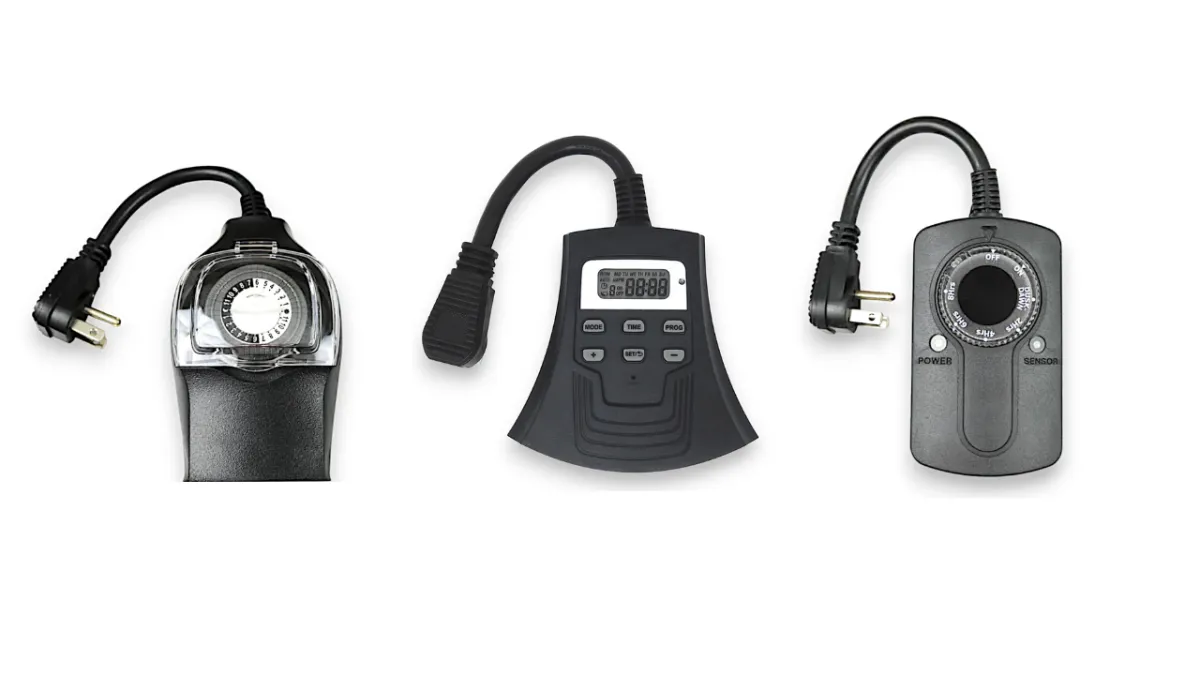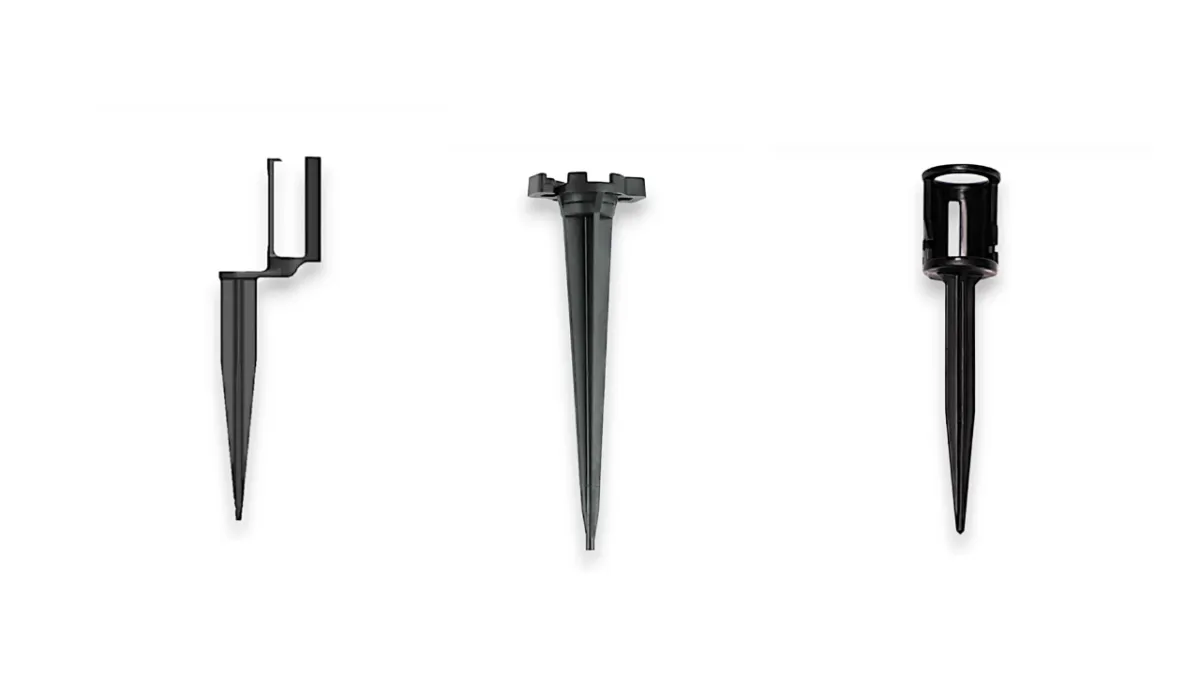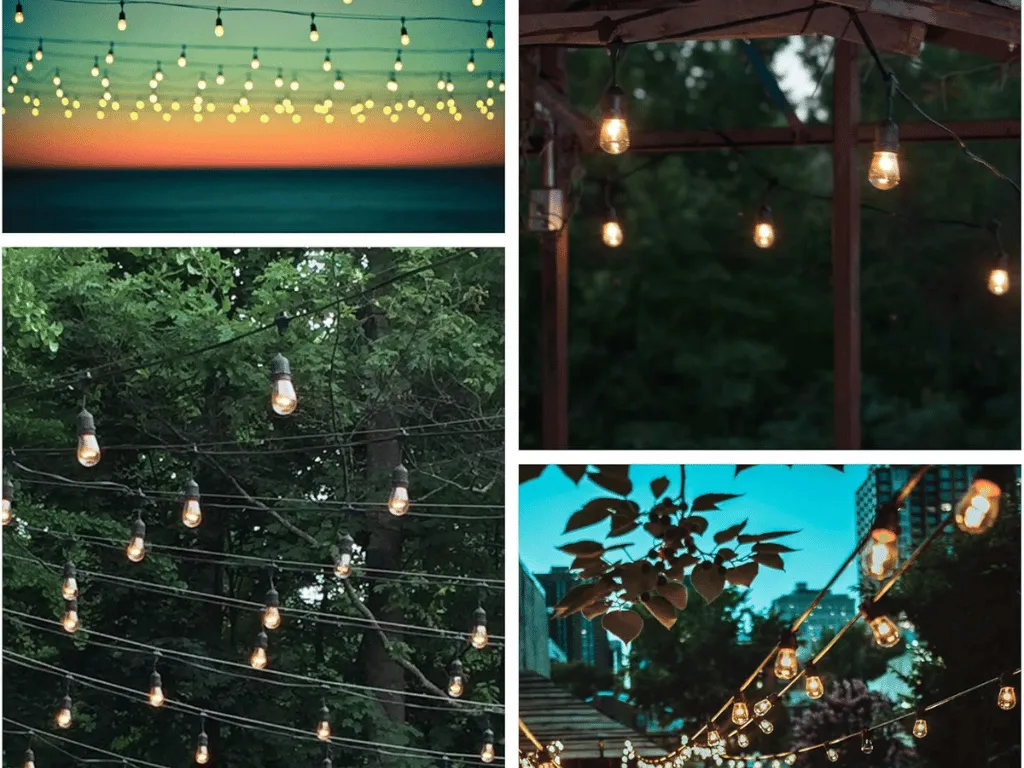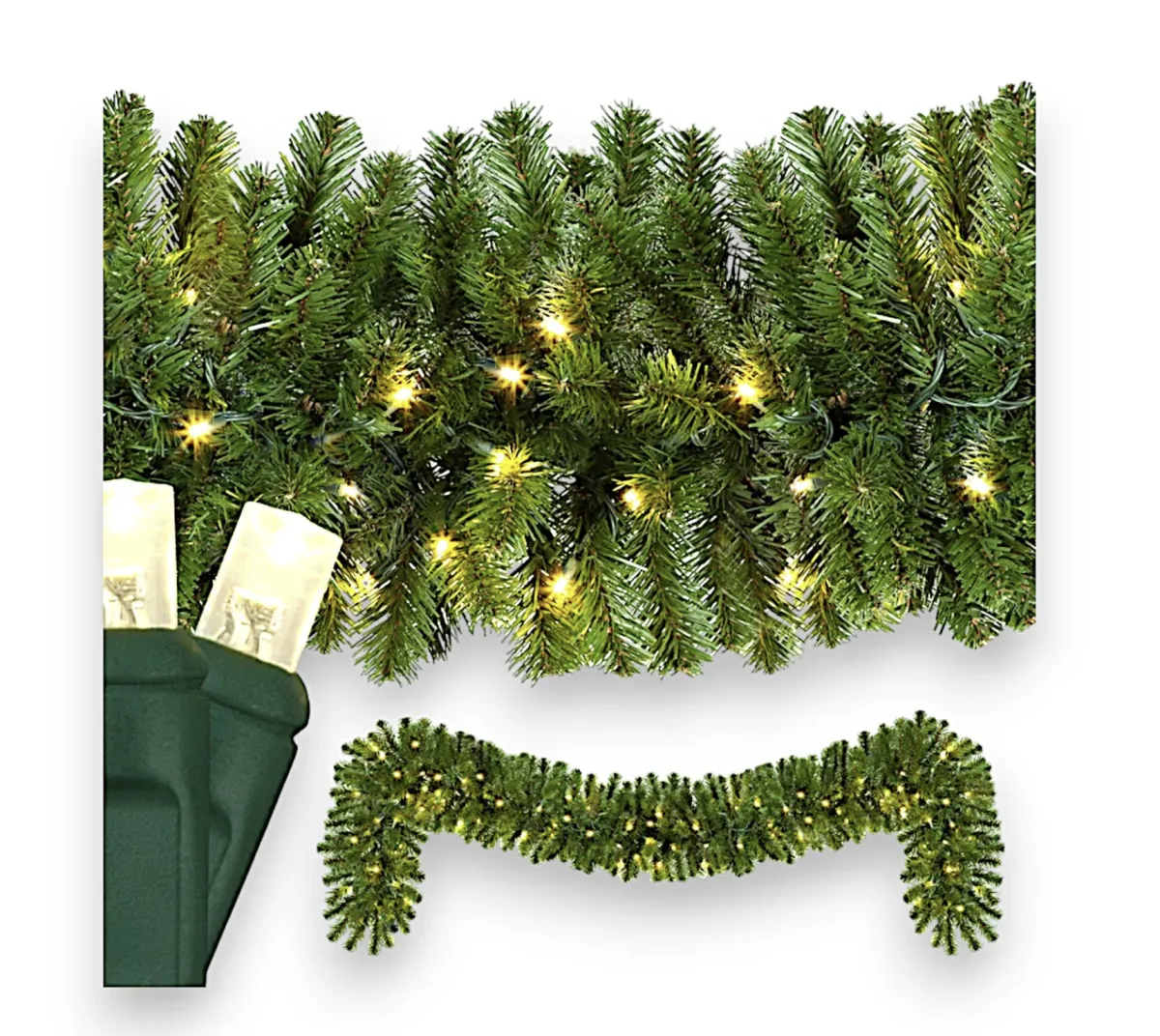All The Lights, Wire, Plugs, Garland, And Wreaths You Need To Build A Successful Christmas Lights Business
Premium Wholesale Christmas Lights supplies for Professional-Grade Installations
Your One-Stop Shop for Exceptional Christmas Lighting Solutions
Welcome to the ultimate resource for all your Christmas lights installation needs!
We understand the importance of quality, durability, and variety when it comes to building a successful Christmas lights installation business. That's why we offer an extensive selection of everything you need to illuminate the holiday season with brilliance and style.
All Christmas Lights Supplies
Professional-grade Christmas light supplies at unbeatable wholesale prices. Our premium holiday lighting solutions are specifically designed to meet the needs of professional installers, offering the highest quality and durability for stunning and reliable Christmas light displays.
EASY Starter Packages
Kickstart your holiday lighting business with our all-inclusive Christmas lights starter packages. These packages include everything you need, from bulbs and clips to socket wires and extension cords, ensuring you're fully prepared to begin your lighting installations from day one.
Discover Expert Tips on Our Blog

The First Critical Step to a Stunning Christmas Light Display
Before purchasing a single strand of Christmas lights or choosing between LEDs and incandescents, successful outdoor holiday decorating begins with something surprisingly simple: taking a good, long look at your house.
The most beautiful Christmas light displays aren't created by randomly hanging lights wherever they fit. They're carefully planned to enhance your home's natural features and architecture. This essential first step—assessing your canvas—sets the foundation for a cohesive, impressive display that maximizes impact while minimizing frustration.
Why Assessment Matters
Professional Christmas light installers always begin with a thorough assessment of each property. This isn't just a formality—it's what allows them to create custom displays that complement each unique home. By adopting this professional approach, you'll:
Identify the most impactful decorating opportunities
Avoid wasting money on inappropriate lights or decorations
Create a cohesive display that enhances your home's architecture
Prevent installation challenges and safety issues
Develop a comprehensive plan before spending a single dollar
Let's break down exactly how to assess your home like a pro decorator.

Getting the Full Picture of Your Home
The foundation of a beautiful Christmas light display begins with understanding your home's unique features from a decorator's perspective. Start by stepping back—literally.
Walk to the curb or even across the street (safely, of course) to get a comprehensive view of your property. This distance provides the same perspective that neighbors and passersby will have when admiring your display. The view from afar often reveals architectural elements and natural focal points that aren't obvious when you're standing right next to your home.
Take several photographs from different angles, capturing your entire home and yard. These images will serve as invaluable reference points throughout your planning and installation process. You'll refer to them repeatedly when deciding light placement, measuring areas, and creating your shopping list.
This step might seem overly simple, but it's frequently overlooked. Those reference photos become your blueprint, allowing you to make notes, mark measurements, and visualize your completed display before purchasing a single decoration.
Identifying Key Decorating Opportunities
With your reference photos in hand, it's time to identify the architectural and landscape elements that offer decorating potential. Think of your home as a canvas with distinct features that can be highlighted through strategic lighting.
Roofline Features
Examine your roofline in detail, noting the number and height of peaks. Each peak creates a natural point of interest in your display and may require special attention during installation. Notice the length of horizontal eaves and overhangs, as these provide perfect pathways for light strands.
Pay attention to the presence and style of gutters around your roof. The type of gutters you have will determine what kind of clips work best for attaching lights securely. Also note the type of shingles or roofing material, as this affects how (or if) you can attach lights directly to the roof surface.
These details will influence both the types of clips needed and light placement options. The roofline often serves as the framework for your entire display, creating a beautiful outline that defines your home's silhouette against the night sky.
Landscape Elements
Your yard offers numerous decorating opportunities through its natural features. Take inventory of trees on your property, noting their size, type, and accessibility. Deciduous trees with bare branches make perfect canvases for light wrapping, while evergreens might look best with draped lights or spotlighting.
Observe the shape and density of bushes and shrubs around your home. These can be easily decorated with net lights or string lights and create beautiful illuminated shapes in your overall design.
Consider the length and visibility of walkways and driveways. These pathways not only guide visitors to your home but also create natural borders for lighting. Well-lit paths add safety as well as beauty to your display.
Identify any special garden features like statues, beds, or distinctive plantings that could be highlighted. These natural elements provide perfect anchors for lights and decorations, creating depth and dimension in your display.
Windows and Entryways
Windows and doors create natural frames for holiday decor and should be carefully considered in your planning. Count and measure all windows, noting any that have unusual shapes or sizes. Windows can be outlined with lights or decorated with wreaths, garlands, or window clings.
Note door locations and styles, particularly your main entry door which often becomes a focal point. Identify potential wreath placement areas and consider how the door opens to ensure decorations won't interfere with functionality.
Look for special architectural details around windows and doors that might be worth highlighting with specialty lighting. Bay windows, arched doorways, or decorative moldings can become stunning features when accentuated with the right lighting approach.
Illuminating these features draws attention to your home's unique character and creates a welcoming atmosphere for visitors and passersby alike.
Porch and Exterior Structures
The entryway area deserves special attention in your planning process. Columns and posts provide perfect opportunities for spiral wrapping with light strands, creating elegant vertical elements in your display. Railings offer ideal pathways for straight light runs, clearly defining the boundaries of your entry area.
Steps and landings present opportunities for accent lighting that enhances both safety and aesthetics. Small stake lights or tape lighting can illuminate these transition areas beautifully. Don't forget to look up—overhead areas like porch ceilings can be transformed with hanging decorations, icicle lights, or even a festive porch chandelier.
This area often becomes the focal point of your display, creating a magical welcome for visitors and setting the tone for your entire Christmas presentation.

Additional Decorating Opportunities
Don't overlook these often-forgotten elements that can add distinctive touches to your display. Planters and window boxes can be filled with seasonal greenery and lights. Your mailbox and lamp posts provide natural structures for wrapping or accenting with garland and ribbons.
Outdoor furniture like benches or Adirondack chairs can be outlined with lights or festooned with holiday cushions and throws. The garage door frame offers a large surface area that can balance your front door decorations on the opposite side of your home.
Even outbuildings like sheds, pergolas, or gazebos can be incorporated into your overall design. Some creative homeowners even decorate seldom-used vehicles, turning them into whimsical elements like "Santa's sleigh" or a vintage Christmas truck.
These details add personality and completeness to your display, showing attention to the entire property rather than just the most obvious features.
Mapping Your Power Sources
Perhaps the most critical practical aspect of your assessment is locating all exterior electrical outlets. Their positions will significantly influence your design and installation approach.
Mark each outlet location on your reference photos so you can plan light placement accordingly. Note whether they're GFCI-protected (Ground Fault Circuit Interrupter), as this protection is important for outdoor electrical safety during potentially wet winter conditions.
Identify which areas of your property have easy power access and which might require long extension cord runs. Consider whether you'll need to run cords around doorways or walkways, as these create potential tripping hazards that must be addressed in your installation plan.
Power availability often determines which areas you'll prioritize in your design, especially if you're working with a limited budget. Focusing your main display elements near power sources can reduce the need for extensive cord runs and additional outdoor-rated extension cords, which can be a significant part of your decorating budget.
Turning Assessment into Action
After completing your thorough assessment, take time to organize your findings. Many decorators find it helpful to create a simple sketch or mark directly on printed photos, highlighting:
Primary decorating areas (roofline, entryway, featured trees)
Secondary decorating opportunities (smaller landscaping, windows, walkways)
Power source locations and approximate distances to key decorating areas
Potential challenging areas that require special attention
This organized assessment becomes the foundation for all subsequent planning—from choosing a theme to establishing a budget, selecting appropriate light types, and creating a shopping list.

Professional Insight: What the Pros See That Amateurs Miss
Professional Christmas light installers develop an eye for identifying a home's best features and potential challenges. They typically look for:
Natural focal points that visitors' eyes will be drawn to first
Architectural symmetry that can be enhanced with balanced lighting
Unique home features that set the property apart from neighbors
Practical installation challenges like difficult-to-reach areas
Potential safety concerns like steep roofs or electrical limitations
By approaching your assessment with these professional considerations in mind, you'll develop a more sophisticated understanding of your home's decorating potential.
The Foundation of Christmas Light Success
Taking the time to thoroughly assess your home might not seem as exciting as shopping for twinkling lights, but it's truly the foundation of a successful holiday display. This critical first step ensures that when you do start purchasing decorations and installing lights, every decision will be informed by a clear understanding of your home's unique potential.
Remember that Christmas light displays often evolve over multiple seasons. Your assessment might reveal more decorating opportunities than you can address in a single year. That's perfectly fine—you can prioritize the most important areas for this season and expand your display in future years.
The most beautiful Christmas light displays are those that enhance a home's natural architecture rather than fighting against it. By starting with a thoughtful assessment, you're already on your way to creating a display that will bring holiday joy to your family and neighborhood for years to come.

1. Why should I assess my home before buying Christmas lights?
Assessment helps you identify the most impactful decorating opportunities, avoid wasting money on inappropriate decorations, create a cohesive display that enhances your home's architecture, prevent installation challenges, and develop a comprehensive plan before spending any money.
2. What's the best way to get a complete view of my home for planning?
Walk to the curb or across the street to see your home from a distance—the same perspective others will have. Take several photographs from different angles to capture your entire property. These photos will serve as reference points throughout your planning process.
3. What roofline features should I pay attention to during assessment?
Note the number and height of peaks, length of horizontal eaves and overhangs, presence and style of gutters, and type of roofing material. These details determine what clip types you'll need and affect light placement options.
4. How should I approach decorating trees and shrubs in my yard?
Take inventory of trees, noting size, type, and accessibility. Deciduous trees with bare branches work well for light wrapping, while evergreens might look better with draped lights or spotlighting. For bushes and shrubs, consider using net lights based on their shape and density.
5. Why is my front entryway particularly important in Christmas light planning?
The entryway often becomes the focal point of your display, creating a welcoming atmosphere and setting the tone for your entire presentation. It offers multiple decorating opportunities with columns, railings, steps, and overhead areas that can be transformed with lights and decorations.
6. What often-overlooked elements can enhance a Christmas light display?
Consider decorating planters, window boxes, mailboxes, lamp posts, outdoor furniture, garage door frames, outbuildings like sheds or pergolas, and even seldom-used vehicles. These details add personality and completeness to your display.

7. Why is mapping power sources a critical part of assessment?
Power outlet locations significantly influence your design and installation approach. Knowing their locations helps you plan light placement, determine extension cord needs, identify potential tripping hazards, and prioritize decorating areas within your budget.
8. How do I check if my outdoor outlets are safe for Christmas lights?
Check whether your outlets are GFCI-protected (Ground Fault Circuit Interrupter), which is important for outdoor electrical safety during wet winter conditions. Look for "Test" and "Reset" buttons on the outlets, which indicate GFCI protection.
9. How should I organize my findings after completing the assessment?
Create a simple sketch or mark directly on printed photos, highlighting primary decorating areas (roofline, entryway, featured trees), secondary opportunities, power source locations with approximate distances to key areas, and potential challenging spots requiring special attention.
10. What do professional Christmas light installers see that amateurs often miss?
Professionals identify natural focal points, architectural symmetry that can be enhanced with balanced lighting, unique home features that set the property apart, practical installation challenges like hard-to-reach areas, and potential safety concerns like steep roofs or electrical limitations.
Frequently Asked Questions
What are the essential supplies needed for Christmas light installation?
The basics include bulbs (like C9 or C7), socket wire, clips, plugs, extension wires, and optionally, timers. Check out the Christmas lights starter packages to get everything you need to start.
How do I choose the right type of Christmas light bulb?
Consider the desired look and location. C9 bulbs are larger and often used for outdoor displays, while mini lights are great for trees and bushes.
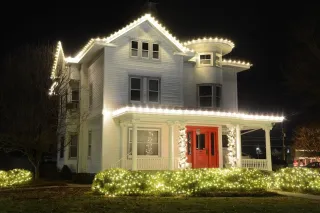
What is the difference between commercial-grade and residential-grade Christmas lights?
Commercial-grade Christmas lights are designed for heavy-duty use and can withstand harsher conditions than residential-grade lights. They are also typically brighter and more durable.
What are the different types of commercial-grade Christmas lights?
The most common types of commercial-grade Christmas lights are LED, C7, C9, mini, and solar lights.
What are the benefits of using commercial-grade Christmas lights?
Commercial-grade Christmas lights are more durable, brighter, and more energy-efficient than residential-grade lights. They are also more versatile and can be used to create a variety of different looks.
What are the drawbacks of using commercial-grade Christmas lights?
Commercial-grade Christmas lights can be more expensive than residential-grade lights. They may also be more difficult to find.
How do I choose the right type of commercial-grade Christmas lights for my needs?
When choosing commercial-grade Christmas lights, consider the following factors:
Durability: If you are using the lights for a large or outdoor display, you will need to choose lights that are durable and can withstand harsh weather conditions.
Brightness: If you need the lights to be seen from a distance, you will need to choose lights that are bright.
Energy efficiency: If you are using the lights for a long period of time, you will want to choose lights that are energy-efficient.
Versatility: If you want to be able to create a variety of different looks, you will need to choose lights that are versatile.
Cost: Commercial-grade Christmas lights can be more expensive than residential-grade lights. Set a budget before you start shopping.
Where can I buy commercial-grade Christmas lights?
Commercial-grade Christmas lights can be purchased online, at specialty lighting stores, and at some home improvement stores. Best prices are above to buy lights
How do I install commercial-grade Christmas lights?
To test commercial-grade Christmas lights before you install them, simply plug them in and turn them on. If any of the lights do not work, replace them before you put up your display.
How do I store commercial-grade Christmas lights properly?
When you are finished with your commercial-grade Christmas lights, be sure to store them properly in a cool, dry place. This will help to extend the life of your lights.
What is the average lifespan of commercial-grade Christmas lights?
The average lifespan of commercial-grade Christmas lights is 5-10 years. However, this can vary depending on the type of light and how well it is cared for.
How do I troubleshoot commercial-grade Christmas lights?
If you are having problems with your commercial-grade Christmas lights, the first thing you should do is check the wiring. Make sure that all of the connections are secure and that there are no frayed or damaged wires. If the wiring is in good condition, the next thing you should do is check the light bulbs. Replace any bulbs that are burned out.
What is the warranty on commercial-grade Christmas lights?
The warranty on commercial-grade Christmas lights varies depending on the manufacturer. Be sure to read the warranty information before you purchase your lights.
What are the safety precautions to take when using commercial-grade Christmas lights?
When using commercial-grade Christmas lights, it is important to take the following safety precautions:
Always use proper wiring.
Secure your lights to the ground or structure.
Do not overload your electrical circuits.
Be careful when using ladders or other elevated surfaces.
Copyright ©2025 All Right Reserved website designed by christmaslights.io
Terms of Service / Privacy Policy
Have questions or need assistance?
Contact us at (855)619-LITE








